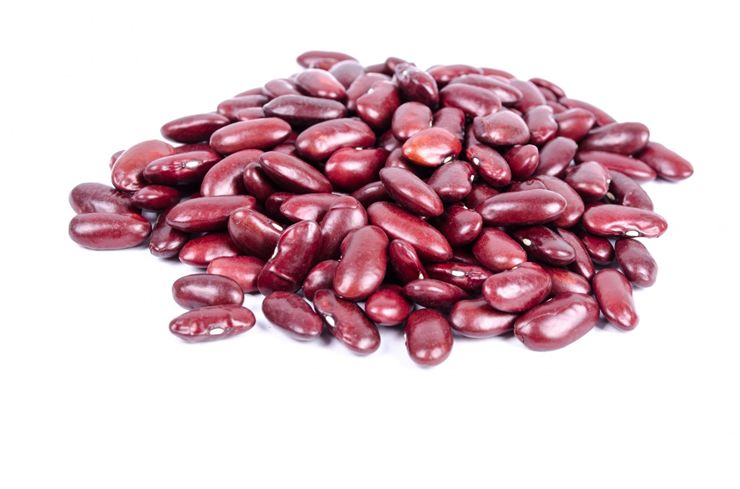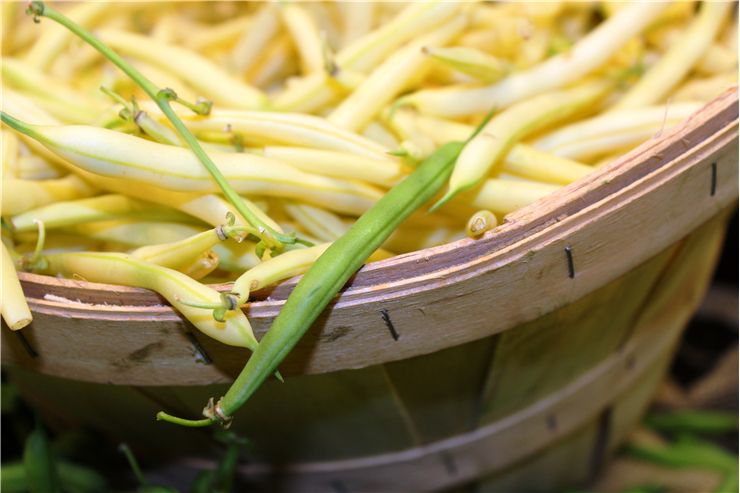Bean Nutrition Facts - Health Benefits of Beans
Bean is a name that we use for several herbaceous annual plants of the family Fabaceae and its seeds that we use for food. Term is used for variety of beans like soybeans, peas, chickpeas, vetches, and lupins but we will here talk about “common bean” (which, again is a blanket term for few subtypes of bean.)
Common bean is known also as a string bean, field bean, flageolet bean, French bean, garden bean, pop bean, haricot bean, or snap bean. It is an annual plant which is planted in summer because it needs warm temperatures to grow. The plant is a Bush of around half-meter high which produces pods in which are seeds. Time from planting to harvest is some two months. Subtypes of a common bean are kidney bean, navy bean, pinto bean, wax bean, runner bean, and broad bean (commonly known as fava bean).

Bean is one of the earliest plants we used as food. Wild variants were gathered in Afghanistan and the Himalayan foothills. The earliest archeological findings of cultivated variants of beans are 9,000 years old and were found in Thailand. The first cultivated beans appeared in Europe some 4,000 years ago. Beans and chickpeas were mentioned in Iliad in 8th century BC. As old as it is bean is still an important source of protein.
- Beans are eaten, fresh dried, or cooked. Dry beans can last for a long time if stored in a cool, dry place.
- Bean is a “heliotropic” plant, which means that its follow the sun throughout the day (similarly to sunflower).
- Some kinds of raw beans (like red and kidney beans) can be toxic. They have toxic lectin phytohaemagglutinin, which if not removed, can cause nutritional deficiencies, and immune (allergic) reactions. It can be removed by boil the beans for at least ten minutes or (in some parts of the world) by fermentation. If undercooked, the bean can be more toxic than a raw bean.
- Different beans have different nutrients. For instance, black beans have vitamin B1, protein, iron, folate, copper, magnesium, manganese, potassium, and zinc while black-eyed peas have vitamins B1, B6, and B3, folate, copper, iron, magnesium, manganese, potassium, and zinc. Kidney beans have Vitamins B1 and B3, folate, iron, magnesium, manganese, potassium, zinc, and omega-3 fatty acids while lentils have vitamins B1 and B6, protein, fiber, niacin, folate, iron, magnesium, manganese, potassium, and zinc.
- As a source of protein, beans are better that meat because they are low in fat, free of saturated and trans-fat, and are completely cholesterol-free.
- Diet, which includes beans, may reduce the risk of heart disease.
- Beans also have complex carbohydrates, which are digested slowly and that way they keep low sugar in the blood and provide a sustained energy source.
- Folate, which can be found in beans is crucial during pregnancy, and pregnant women, and their unborn babies have benefits from it. Consummation during pregnancy is recommended.
- Beans are low in calories and older people which need fewer calories but still need nutrients are recommended to consume beans.
- Diet that includes beans several times a week may decrease the risk of colorectal adenomas (polyps.) This diet in may lower the risk of colorectal cancer.
- Beans which have edible pods have a lower amount of protein than dried beans.
- If you want to lose weight, you should include beans in your diet. You will feel less need to eat because Beans can make you feel fuller.
- Because of their high fiber and antioxidants, some scientists say that beans can prevent other types of chronic diseases and some other cancers also.
- The fiber in beans also prevents (or even treats) constipation and provide regular bowel movement.

